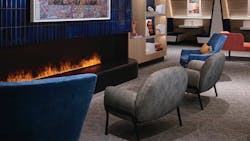Advancing Sustainable Practices: How to Implement Green Building Strategies
In the evolving world of facility management and building ownership, sustainability has become a cornerstone of modern design and operation. As we strive to create more eco-friendly, efficient, and safe environments, integrating innovative solutions plays a crucial role.
One avenue toward achieving this is through the adoption of innovative technologies that prioritize both environmental consciousness and operational efficiency.
The Importance of Sustainable Design in Building Management
Sustainable design isn't just about reducing carbon footprints; it's about fostering healthier, more efficient spaces for occupants while minimizing environmental impact. Here's why integrating sustainability into building design is paramount:
Environmental Responsibility
Buildings are significant contributors to global energy consumption and emissions. Sustainable practices help mitigate these impacts by reducing resource consumption and waste generation. For example, the adoption of eco-friendly fireplaces can minimize the need for fossil fuels and eliminate toxic emissions.
Cost Efficiency
Sustainable buildings often lead to long-term cost savings. Energy-efficient systems and materials reduce utility bills and maintenance expenses. By prioritizing eco-friendly technologies and low-maintenance solutions, building owners can further enhance these cost-saving efforts.
Occupant Wellbeing
Indoor environmental quality significantly impacts occupant health and productivity. Sustainable design promotes better indoor air quality, which is essential for creating a healthy and productive environment. By prioritizing eco-friendly features and technologies, building owners can enhance indoor air quality, contributing to the wellbeing of occupants.
Safety and Compliance
Innovative sustainable technologies often come with enhanced safety features. Water vapor fireplaces, with their cool-to-the-touch flames and absence of real fire, eliminate fire hazards and ensure compliance with safety regulations without compromising aesthetics.
Water vapor fireplace technology redefines the traditional idea of a fireplace with its innovative use of LED lighting and water vapor, perfectly mimicking real flames without the need for combustion or heat. Beyond aesthetics, they champion safety and environmental consciousness by emitting no pollutants and posing no fire hazards, making them ideal for building. Furthermore, their remarkable energy efficiency, coupled with their versatility in design and installation, ensures they're adaptable to various residential and commercial settings, offering a sustainable solution for creating cozy environments while minimizing energy consumption. Serving as educational tools for promoting sustainable living practices, water vapor fireplaces exemplify the transformative potential of green technology, paving the way for a brighter, greener future as society continues to prioritize sustainability.
Incorporating innovative solutions into building design can significantly enhance sustainability. These technologies play a vital role in green building strategies by providing eco-friendly alternatives that mitigate environmental impact. By leveraging such solutions, building managers can promote better indoor air quality, minimize health risks for occupants and ensure a safer environment overall. Additionally, these technologies often operate efficiently on minimal energy and entail low maintenance needs, leading to significant long-term cost savings for building owners.
To enhance sustainability within your properties, start with small steps, first by focusing on implementing eco-conscious furniture and equipment solutions. Beyond innovative fireplace technologies, consider options like energy-efficient lighting, water-saving fixtures, sustainable materials, energy-efficient appliances and indoor air quality improvements. Conduct a thorough sustainability assessment to identify opportunities to minimize environmental impact and prioritize the incorporation of these eco-friendly options to promote sustainability within your properties.
Conclusion
Sustainable building design is essential for creating healthier, more efficient environments that benefit both occupants and the planet. By integrating innovative technologies and adopting eco-friendly practices, facility managers and building owners can lead the way toward a more sustainable future. Together, let's build a greener, more sustainable world, one step at a time.
About the Author
Stefan Lewinger
Stefan Lewinger, the Chief Revenue Officer (CRO) of Aquafire, joined the executive team in 2021, bringing with him a wealth of entrepreneurial experience. With successful exits from his previous ventures, Sock Fancy and Good Trouble (formerly Goodboy), Stefan has proven his prowess in building and scaling direct-to-consumer startups.

